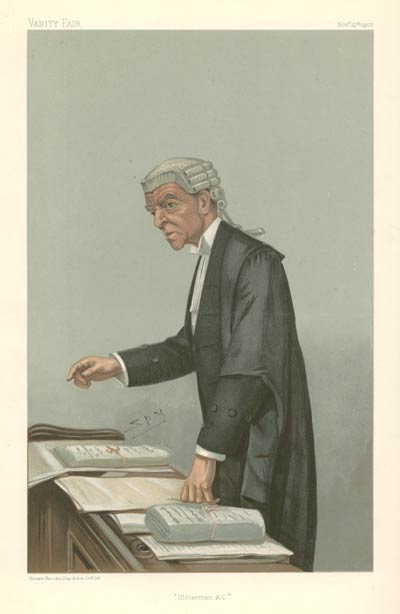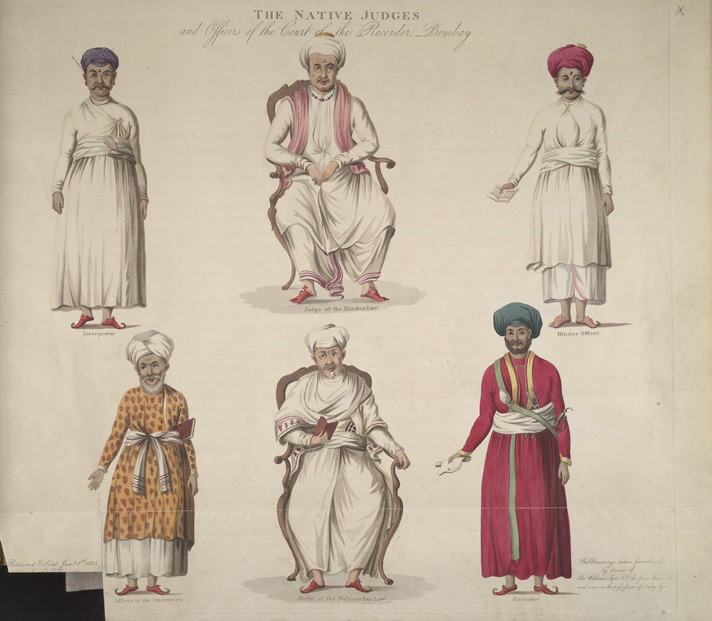|
Vernon Lushington
Vernon Lushington KC, (8 March 1832 – 24 January 1912), was a Positivist, Deputy Judge Advocate General, Second Secretary to the Admiralty, and was associated with the Pre-Raphaelites. He was a Cambridge Apostle. Lushington was born in Westminster, London, to Stephen and Sarah Grace (née Carr) Lushington; his twin brother was Godfrey Lushington, KCB GCMG, Permanent Under- Secretary of State of the Home Office. He was educated at East India College, Haileybury, Hertfordshire, and Trinity College, Cambridge. He became a QC, a county court judge, Secretary to the Admiralty in 1871, and Deputy Judge Advocate General from 1878 to 1912. He married Jane Mowatt, daughter of Francis Mowatt, on 28 February 1865. From 1877 to 1903 the Lushington family's country residence was Pyports, Cobham, Surrey. With his brother Godfrey, he advocated positivist philosophy, motivated by the ideas of Auguste Comte, and was a follower of Frederic Harrison. Influenced by Frederick Denison Maurice, ... [...More Info...] [...Related Items...] OR: [Wikipedia] [Google] [Baidu] |
King's Counsel
In the United Kingdom and in some Commonwealth countries, a King's Counsel (post-nominal initials KC) during the reign of a king, or Queen's Counsel (post-nominal initials QC) during the reign of a queen, is a lawyer (usually a barrister or advocate) who is typically a senior trial lawyer. Technically appointed by the monarch of the country to be one of 'His erMajesty's Counsel learned in the law', the position originated in England and Wales. Some Commonwealth countries have either abolished the position, or renamed it so as to remove monarchical connotations, for example, ' Senior counsel' or 'Senior Advocate'. Appointment as King's Counsel is an office, conferred by the Crown, that is recognised by courts. Members have the privilege of sitting within the inner bar of court. As members wear silk gowns of a particular design (see court dress), appointment as King's Counsel is known informally as ''receiving, obtaining,'' or ''taking silk'' and KCs are often colloquially ... [...More Info...] [...Related Items...] OR: [Wikipedia] [Google] [Baidu] |
Judge
A judge is a person who wiktionary:preside, presides over court proceedings, either alone or as a part of a Judicial panel, panel of judges. A judge hears all the witnesses and any other Evidence (law), evidence presented by the barristers or solicitors of the case, assesses the credibility and arguments of the parties, and then issues a ruling in the Case law, case based on their interpretation of the law and their own personal judgment. A judge is expected to conduct the trial wiktionary:impartial, impartially and, typically, in an in open court, open court. The powers, functions, method of appointment, discipline, and training of judges vary widely across different jurisdictions. In some jurisdictions, the judge's powers may be shared with a jury. In inquisitorial systems of criminal investigation, a judge might also be an examining magistrate. The presiding judge ensures that all court proceedings are lawful and orderly. Powers and functions The ultimate task of a judge is ... [...More Info...] [...Related Items...] OR: [Wikipedia] [Google] [Baidu] |
Leslie Stephen
Sir Leslie Stephen (28 November 1832 – 22 February 1904) was an English author, critic, historian, biographer, and mountaineer, and the father of Virginia Woolf and Vanessa Bell. Life Sir Leslie Stephen came from a distinguished intellectual family, and was born at 14 (later renumbered 42) Hyde Park Gate, Kensington in London, the son of Sir James Stephen and (Lady) Jane Catherine (née Venn) Stephen. His father was Colonial Undersecretary of State and a noted abolitionist. He was the fourth of five children, his siblings including James Fitzjames Stephen (1829–1894) and Caroline Emelia Stephen (1834–1909). His family had belonged to the Clapham Sect, the early 19th century group of mainly evangelical Christian social reformers. At his father's house he saw a good deal of the Macaulays, James Spedding, Sir Henry Taylor and Nassau Senior. Leslie Stephen was educated at Eton College, King's College London and Trinity Hall, Cambridge, where he graduated B.A. (20th w ... [...More Info...] [...Related Items...] OR: [Wikipedia] [Google] [Baidu] |
Kelmscott Manor
Kelmscott Manor is a limestone manor house in the Cotswolds village of Kelmscott, in West Oxfordshire, southern England. It dates from around 1570, with a late 17th-century wing, and is listed Grade I on the National Heritage List for England. It is situated close to the River Thames. The nearest town is Lechlade-On-Thames. History 1570 to 1870 The house was built by local farmer Thomas Turner and remained in the family for many generations. After George Turner died in 1734, the house was let out. The house was originally called Lower House, but became Kelmscott Manor when James Turner (d.1870) purchased 53½ acres of manorial land together with the lordship in 1864. After James died the manor passed to his nephew, Charles Hobbs, who let out the property. William Morris and family Kelmscott Manor was the country home of the writer, designer and socialist William Morris from 1871 until his death in 1896. Today it is owned by the Society of Antiquaries of London, and is open ... [...More Info...] [...Related Items...] OR: [Wikipedia] [Google] [Baidu] |
William Morris
William Morris (24 March 1834 – 3 October 1896) was a British textile designer, poet, artist, novelist, architectural conservationist, printer, translator and socialist activist associated with the British Arts and Crafts Movement. He was a major contributor to the revival of traditional British textile arts and methods of production. His literary contributions helped to establish the modern fantasy genre, while he helped win acceptance of socialism in '' fin de siècle'' Great Britain. Morris was born in Walthamstow, Essex, to a wealthy middle-class family. He came under the strong influence of medievalism while studying Classics at Oxford University, there joining the Birmingham Set. After university, he married Jane Burden, and developed close friendships with Pre-Raphaelite artists Edward Burne-Jones and Dante Gabriel Rossetti and with Neo-Gothic architect Philip Webb. Webb and Morris designed Red House in Kent where Morris lived from 1859 to 1865, before m ... [...More Info...] [...Related Items...] OR: [Wikipedia] [Google] [Baidu] |
Dante Gabriel Rossetti
Gabriel Charles Dante Rossetti (12 May 1828 – 9 April 1882), generally known as Dante Gabriel Rossetti (), was an English poet, illustrator, painter, translator and member of the Rossetti family. He founded the Pre-Raphaelite Brotherhood in 1848 with William Holman Hunt and John Everett Millais. Rossetti inspired the next generation of artists and writers, William Morris and Edward Burne-Jones in particular. His work also influenced the European Symbolists and was a major precursor of the Aesthetic movement. Rossetti's art was characterised by its sensuality and its medieval revivalism. His early poetry was influenced by John Keats and William Blake. His later poetry was characterised by the complex interlinking of thought and feeling, especially in his sonnet sequence, ''The House of Life''. Poetry and image are closely entwined in Rossetti's work. He frequently wrote sonnets to accompany his pictures, spanning from ''The Girlhood of Mary Virgin'' (1849) and ''Astarte ... [...More Info...] [...Related Items...] OR: [Wikipedia] [Google] [Baidu] |
Edward Burne-Jones
Sir Edward Coley Burne-Jones, 1st Baronet, (; 28 August, 183317 June, 1898) was a British painter and designer associated with the Pre-Raphaelite Brotherhood which included Dante Gabriel Rossetti, John Millais, Ford Madox Brown and Holman Hunt. Burne-Jones worked with William Morris as a founding partner in Morris, Marshall, Faulkner & Co in the design of decorative arts. Burne-Jones's early paintings show the influence of Dante Gabriel Rossetti, but by 1870 he had developed his own style. In 1877, he exhibited eight oil paintings at the Grosvenor Gallery (a new rival to the Royal Academy). These included '' The Beguiling of Merlin''. The timing was right and Burne-Jones was taken up as a herald and star of the new Aesthetic Movement. In the studio of Morris and Co. Burne-Jones worked as a designer of a wide range of crafts including ceramic tiles, jewellery, tapestries, and mosaics. Among his most significant and lasting designs are those for stained glass windows th ... [...More Info...] [...Related Items...] OR: [Wikipedia] [Google] [Baidu] |
Richard Buckley Litchfield
Richard Buckley Litchfield (6 January 1832 in Yarpole – 11 January 1903 in Cannes) was a British scholar and philanthropist.. Life R. B. Litchfield was the only son of Captain Richard Litchfield of Cheltenham, England. He was educated at Cheltenham College and Trinity College, Cambridge, where he became a friend of James Clerk Maxwell, and where he then taught mathematics. He was admitted to the Inner Temple in 1854, and was called to the Bar in 1863. He was a founder of the Working Men's College, London, where he worked devotedly from 1854 to 1901, being the College's Bursar, and becoming its Vice Principal between 1872 and 1875. In the mid-1850s he was editor of the College magazine. J. F. C. Harrison ,''A History of the Working Men's College (1854-1954)'', Routledge Kegan Paul, 1954 Litchfield was a fellow Working Men's College colleague of John Ruskin. He married a daughter of Charles Darwin, Henrietta Emma ('Etty') Darwin, in 1871, but there were no children from the ... [...More Info...] [...Related Items...] OR: [Wikipedia] [Google] [Baidu] |
Thomas Hughes
Thomas Hughes (20 October 182222 March 1896) was an English lawyer, judge, politician and author. He is most famous for his novel '' Tom Brown's School Days'' (1857), a semi-autobiographical work set at Rugby School, which Hughes had attended. It had a lesser-known sequel, '' Tom Brown at Oxford'' (1861). Hughes had numerous other interests, in particular as a Member of Parliament, in the British co-operative movement, and in a settlement— Rugby, Tennessee, USA—reflecting his values. Early life Hughes was the second son of John Hughes, editor of the ''Boscobel Tracts'' (1830), and was born in Uffington, Berkshire (now Oxfordshire). He had six brothers, and one sister, Jane Senior, who later became Britain's first female civil servant. At the age of eight he was sent to Twyford School, a preparatory public school near Winchester, where he remained until the age of eleven. In February 1834 he went to Rugby School, which was then under the celebrated Thomas Arnold, a ... [...More Info...] [...Related Items...] OR: [Wikipedia] [Google] [Baidu] |
Frederick James Furnivall
Frederick James Furnivall (4 February 1825 – 2 July 1910) was an English philologist, best known as one of the co-creators of the '' New English Dictionary''. He founded a number of learned societies on early English literature and made pioneering and massive editorial contributions to the subject, of which the most notable was his parallel text edition of '' The Canterbury Tales''. He was one of the founders of and teachers at the London Working Men's College and a lifelong campaigner against injustice. Life Frederick James Furnivall was born on 4 February 1825 in Egham, Surrey, the son of a surgeon who had made his fortune from running the Great Fosters lunatic asylum. He was educated at University College, London, and Trinity Hall, Cambridge, where he took an undistinguished mathematics degree. He was called to the bar from Lincoln's Inn in 1849 and practised desultorily until 1870. In 1862 Furnivall married Eleanor Nickel Dalziel ( – 1937). Some authors descri ... [...More Info...] [...Related Items...] OR: [Wikipedia] [Google] [Baidu] |






